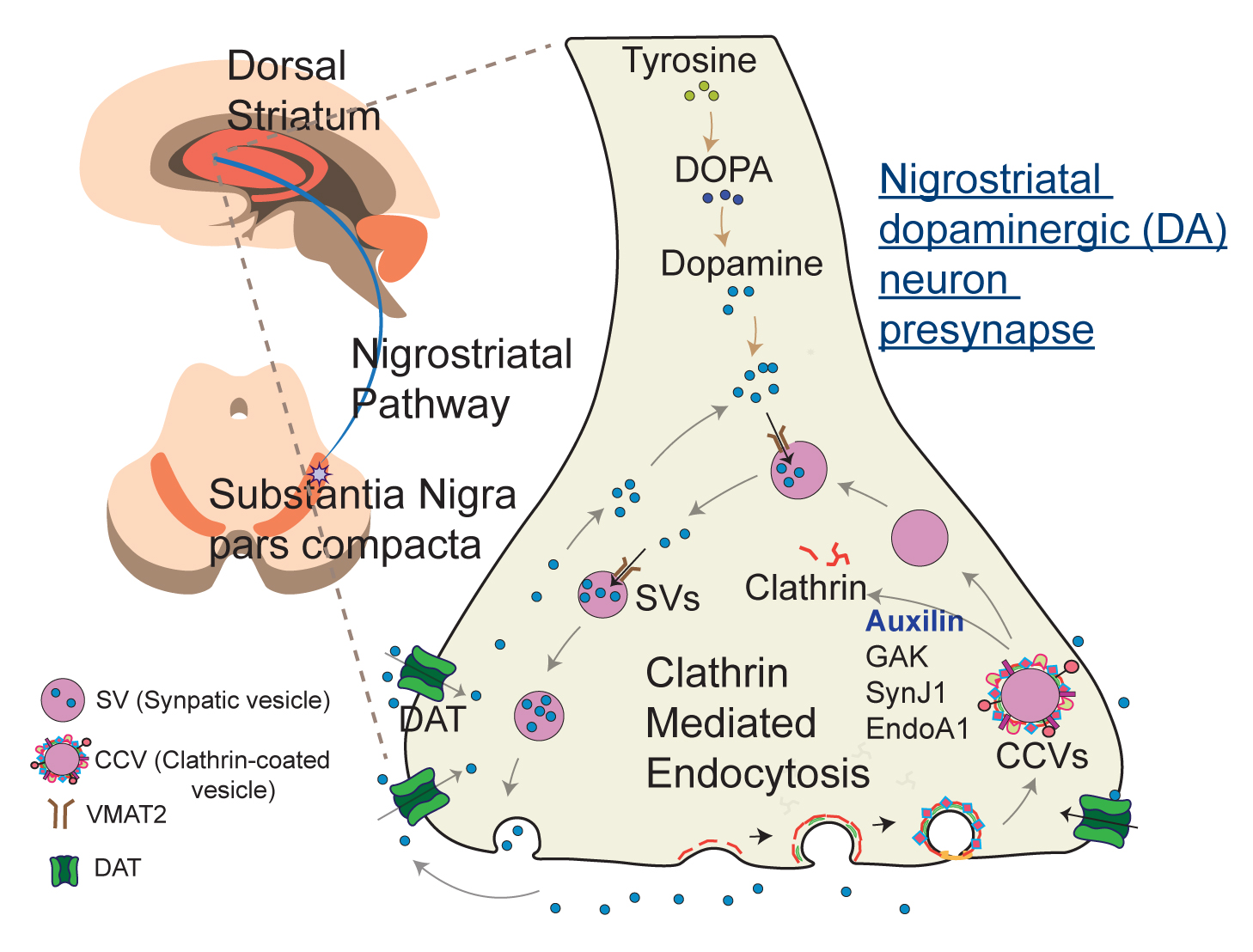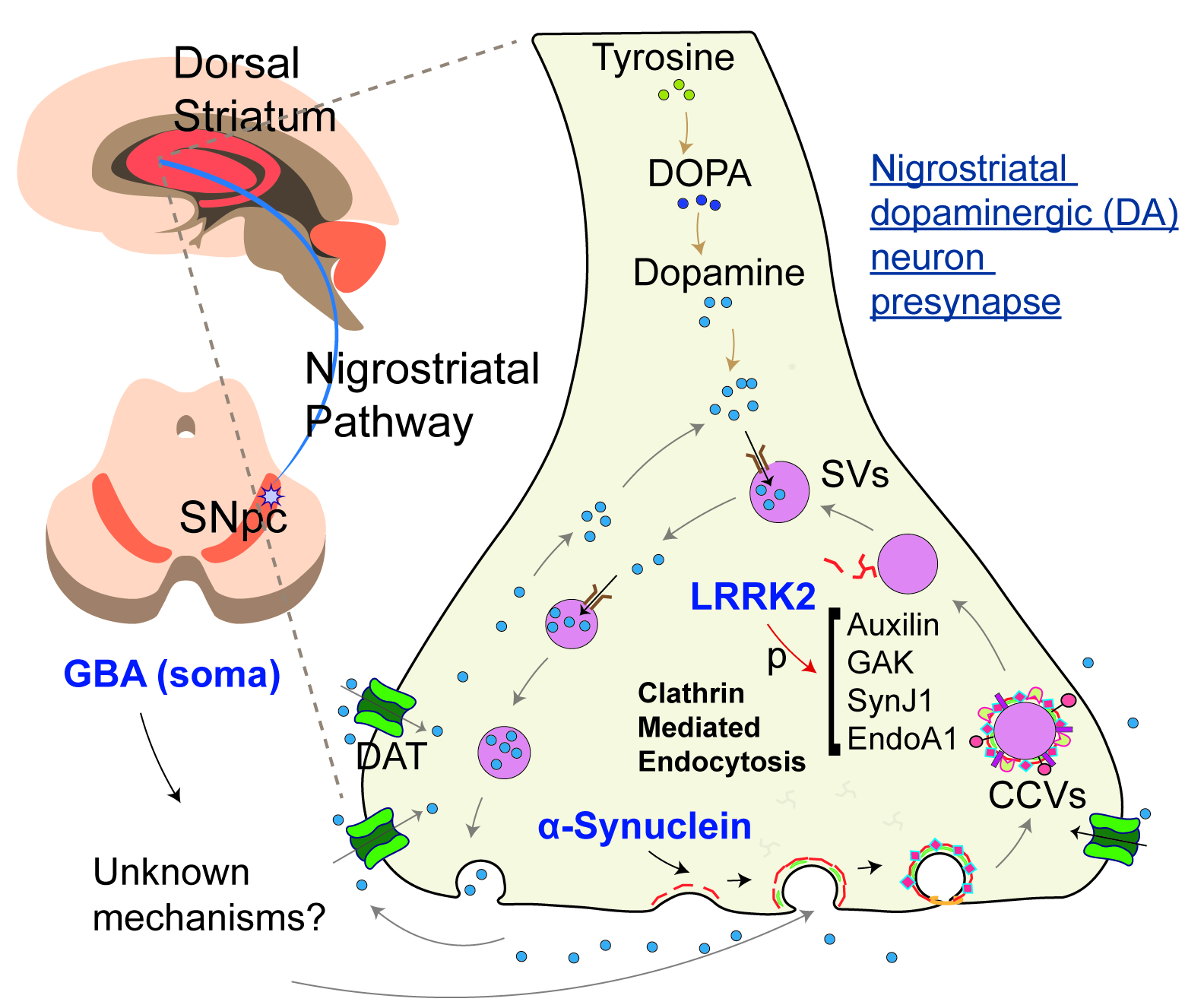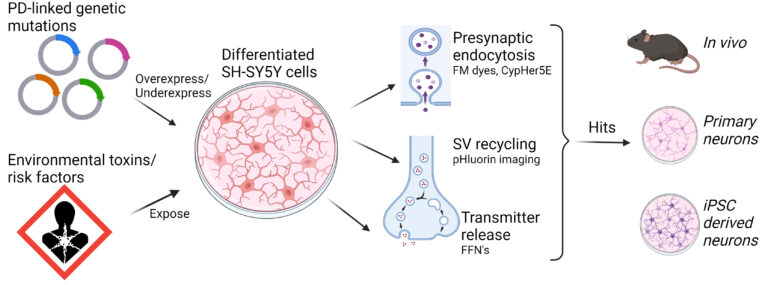Projects
Presynaptic endocytosis deficits in the pathogenesis of Parkinson’s disease (PD)
Emerging evidence in PD genetics hints that presynaptic clathrin-mediated endocytosis (CME), which helps recycle synaptic vesicles, play a significant role in presynaptic degeneration of Parkinson’s disease. In this study, we focus on understanding this connection using models with reduced function of a protein called auxilin.
Auxilin is crucial for presynaptic CME in the neurons. Mutations in the auxilin gene can lead to a rare form of PD known as PARK19. We and others have shown that auxilin loss-of-function is an ideal model to study presynaptic CME in PD. Using auxilin knockout mice and PARK19 CRISPRed- and patient-iPSC-derived neurons, our lab is uncovering how problems in presynaptic CME may contribute to the development of PD.

Exploring whether mutations in LRRK2, SNCA, and GBA drive PD through presynaptic endocytosis deficits
LRRK2: LRRK2, among other functions, plays a role in presynaptic endocytosis. While PD-related LRRK2 mutations inhibit key presynaptic endocytosis proteins, it is unclear whether these mutations cause PD through this pathway. We are investigating this.
SNCA (α-Synuclein): The protein α-synuclein plays a key role in recycling synaptic vesicles and facilitating presynaptic endocytosis. While the α-synuclein aggregation is extensively studied in PD, the effects of its synaptic depletion are less understood. We are investigating if loss of normal α-synuclein contribute to PD by disrupting presynaptic endocytosis.
GBA: The primary effects of GBA mutations occur in the cell body. Thus, they serve as an ideal system to study how cell body-specific disturbances affect presynaptic function. Our preliminary findings in GBA mutant mice show presynaptic endocytosis defects without PD-like motor symptoms. We are investigating if subtle presynaptic endocytosis deficits, when co-occur with GBA mutations, leads to PD?

Screening for genetic and environmental modifiers of presynaptic endocytosis
Several PD-linked genes and environmental toxin exposures mimic the downstream effects of presynaptic endocytosis deficits. Using SH-SY5Y cells and primary neurons from mice, we will conduct screens to identify PD-linked genes and toxins that modify presynaptic endocytosis and synaptic vesicle recycling.

Effect of aging on presynaptic endocytosis: implications for susceptibility to degeneration
Why nigrostriatal dopaminergic neurons have higher vulnerability to degeneration in Parkinson’s disease (PD) remains unclear. Aging, the major PD risk factor, also results in nigrostriatal DA neuronal loss. This study will explore whether reduced presynaptic endocytosis underlies this vulnerability and how aging amplifies it, leading to degeneration.
